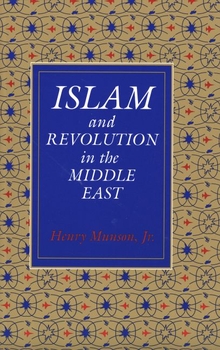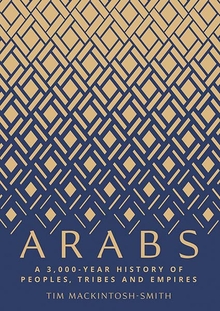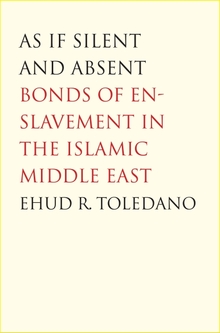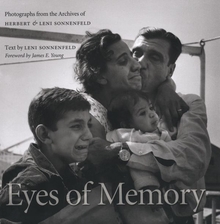Islam and Revolution in the Middle East
WARNING
You are viewing an older version of the Yalebooks website. Please visit out new website with more updated information and a better user experience: https://www.yalebooks.com
Henry Munson
Why did an Islamic revolution occur only in Iran? Why have most Muslim fundamentalists elsewhere been incapable of mobilizing mass support? In this compellingly argued book, Henry Munson, Jr., addresses these questions through historical and anthropological analysis of the roles of Islam in Middle Eastern society and politics.
“This superb study will make excellent background reading for Americans interested in the contemporary world of Islam, but it also will lend itself to classroom use in courses on Middle East politics, religion, and society.”—Bruce B. Lawrence, Duke University
“Munson’s book synthesizes secondary work in ways that are original, accessible, and important for a wide audience.”—Nikki Keddie, University of California, Los Angeles
“The tone of Islam and Revolution is lively and provocative and the content is balanced and well-reasoned. This insightful and lucidly argued book will be as much at home in the hands of the general readers as in the classroom or on the scholar’s bookshelf.”—Augustus Richard Norton, United States Military Academy at West Point
“The most exciting section of the book for the initiated is Part III, ‘Explanations.’ A rigorous discussion of explanatory models.”—Juan R. Cole, Middle East Journal
“[A] stimulating book. . . . A fascinating case study in the re-invention of tradition.”—Roger Hardy, London Review of Books
“This superb study will make excellent background reading for Americans interested in the contemporary world of Islam, but it also will lend itself to classroom use in courses on Middle East politics, religion, and society.”—Bruce B. Lawrence, Duke University
“Munson’s book synthesizes secondary work in ways that are original, accessible, and important for a wide audience.”—Nikki Keddie, University of California, Los Angeles
“The tone of Islam and Revolution is lively and provocative and the content is balanced and well-reasoned. This insightful and lucidly argued book will be as much at home in the hands of the general readers as in the classroom or on the scholar’s bookshelf.”—Augustus Richard Norton, United States Military Academy at West Point
“The most exciting section of the book for the initiated is Part III, ‘Explanations.’ A rigorous discussion of explanatory models.”—Juan R. Cole, Middle East Journal
“[A] stimulating book. . . . A fascinating case study in the re-invention of tradition.”—Roger Hardy, London Review of Books
"This superb study will make excellent background reading for Americans interested in the contemporary world of Islam, but it also will lend itself to classroom use in courses on Middle East politics, religion, and society."—Bruce B. Lawrence, Duke University
"Munson’s book synthesizes secondary work in ways that are original, accessible, and important for a wide audience."—Nikki Keddie, University of California, Los Angeles
"An excellent comparison and analysis of the two major branches of Islam."—Library Journal
"The tone of Islam and Revolution is lively and provocative and the content is balanced and well-reasoned. This insightful and lucidly argued book will be as much at home in the hands of the general reader as in the classroom or on the scholar’s bookshelf."—Augustus Richard Norton, United States Military Academy at West Point, New York and author of Amal and the Sh’ia
"[A] stimulating book. . . . A kind of handbook to the debate on Islamic fundamentalism. . . . A fascinating case-study in the re-invention of tradition."—Roger Hardy, London Review of Books
"Henry Munson in his excellent work strongly challenges the popular conceptions as to why the revolution succeeded when it did in Iran."—Gerry Mulligan, Irish Independent
"Islam and Revolution in the Middle East does attempt to find out why an Islamic revolution occurred only in Iran and why other Muslim activists elsewhere in the region have so far failed to mobilize mass support for their cause. Munson approaches the task in a way that is refreshing, by synthesizing historical facts and anthropological explanations into a theoretical postulate that many might find compelling. . . . A serious and illuminating study."—Africa Events
"This short book will provoke scholars to rethink their theoretical explanations of Muslim revivalism and the Iranian Revolution."—Juan R. I. Cole, Middle East Journal
"Henry Munson has written a remarkably lucid account of the current situation of Islamic movements in the context of the historical and doctrinal features of Islam, followed by a sensible assessment of the different explanations of ’Islamic revival.’ It is an ideal book for introducing the subject to students and other interested readers."—Sami Zubaida, Middle East Report
"This book sets out to explain why an Islamic revolution took place in Iran in 1978-79 and why one has not occurred elsewhere in the Middle East or even earlier in Iran. . . . .Munson’s book is a valuable update on much of the current thinking on the Iranian revolution. . . . This book is a useful review of an important question for all who are interested in the Middle East. Munson displays a discerning grasp of the issues and a clear and cogent writing style that will be particularly valued by those who do not have a substantial knowledge of the Middle East."—Moojan Momen, American Historical Review
"Munson has presented us with an astute summary of literature on Islamic revivalism with primary references to secondary sources. . . . Sharp analysis and new theoretical questions."—Manochehr Dorraj, Social Science Quarterly
"Munson is crisp, concise, and to the point. . . . He covers the Islamic fundamentalist movements in Iran, Saudi Arabia, Egypt, and Syria against the background of Islamic sacred history in order to explain why an Islamic revolution occurred only in Iran. . . . Munson’s analysis is rigorous and insightful."—Said Amir Arjomand, Journal of Religion
"The vignettes are gems, as filled with pithy insights into the class struggle in Morocco and lumpenproletarian life and its trials as a 17th-century picaresque novel. They are streaked with ethnographic color—what it’s like to be a charcoal burner, the fresh mint economy that supplies Tangiers, the full meanness of envy and the evil eye, the bitterness between rich and poor brothers or cousins, the despair of a man who has no son. For all these the book is a small treasure."—Louise E. Sweet, International Journal of Middle Studies
"Henry Munson in his excellent work strongly challenges the popular conceptions as to why the revolution succeeded when it did in Iran."—Gerry Mulligan, Irish Independent
"Islam and Revolution in the Middle East does attempt to find out why an Islamic revolution occurred only in Iran and why other Muslim activists elsewhere in the region have so far failed to mobilize mass support for their cause. Munson approaches the task in a way that is refreshing, by synthesizing historical facts and anthropological explanations into a theoretical postulate that many might find compelling. . . . A serious and illuminating study."—Africa Events
"This short book will provoke scholars to rethink their theoretical explanations of Muslim revivalism and the Iranian Revolution."—Juan R. I. Cole, Middle East Journal
"Henry Munson has written a remarkably lucid account of the current situation of Islamic movements in the context of the historical and doctrinal features of Islam, followed by a sensible assessment of the different explanations of ’Islamic revival.’ It is an ideal book for introducing the subject to students and other interested readers."—Sami Zubaida, Middle East Report
"This book sets out to explain why an Islamic revolution took place in Iran in 1978-79 and why one has not occurred elsewhere in the Middle East or even earlier in Iran. . . . .Munson’s book is a valuable update on much of the current thinking on the Iranian revolution. . . . This book is a useful review of an important question for all who are interested in the Middle East. Munson displays a discerning grasp of the issues and a clear and cogent writing style that will be particularly valued by those who do not have a substantial knowledge of the Middle East."—Moojan Momen, American Historical Review
"Munson has presented us with an astute summary of literature on Islamic revivalism with primary references to secondary sources. . . . Sharp analysis and new theoretical questions."—Manochehr Dorraj, Social Science Quarterly
"Munson is crisp, concise, and to the point. . . . He covers the Islamic fundamentalist movements in Iran, Saudi Arabia, Egypt, and Syria against the background of Islamic sacred history in order to explain why an Islamic revolution occurred only in Iran. . . . Munson’s analysis is rigorous and insightful."—Said Amir Arjomand, Journal of Religion
"The vignettes are gems, as filled with pithy insights into the class struggle in Morocco and lumpenproletarian life and its trials as a 17th-century picaresque novel. They are streaked with ethnographic color—what it’s like to be a charcoal burner, the fresh mint economy that supplies Tangiers, the full meanness of envy and the evil eye, the bitterness between rich and poor brothers or cousins, the despair of a man who has no son. For all these the book is a small treasure."—Louise E. Sweet, International Journal of Middle Studies
"Henry Munson in his excellent work strongly challenges the popular conceptions as to why the revolution succeeded when it did in Iran."—Gerry Mulligan, Irish Independent
"Islam and Revolution in the Middle East does attempt to find out why an Islamic revolution occurred only in Iran and why other Muslim activists elsewhere in the region have so far failed to mobilize mass support for their cause. Munson approaches the task in a way that is refreshing, by synthesizing historical facts and anthropological explanations into a theoretical postulate that many might find compelling. . . . A serious and illuminating study."—Africa Events
"This short book will provoke scholars to rethink their theoretical explanations of Muslim revivalism and the Iranian Revolution."—Juan R. I. Cole, Middle East Journal
"Henry Munson has written a remarkably lucid account of the current situation of Islamic movements in the context of the historical and doctrinal features of Islam, followed by a sensible assessment of the different explanations of ’Islamic revival.’ It is an ideal book for introducing the subject to students and other interested readers."—Sami Zubaida, Middle East Report
"This book sets out to explain why an Islamic revolution took place in Iran in 1978-79 and why one has not occurred elsewhere in the Middle East or even earlier in Iran. . . . .Munson’s book is a valuable update on much of the current thinking on the Iranian revolution. . . . This book is a useful review of an important question for all who are interested in the Middle East. Munson displays a discerning grasp of the issues and a clear and cogent writing style that will be particularly valued by those who do not have a substantial knowledge of the Middle East."—Moojan Momen, American Historical Review
"Munson has presented us with an astute summary of literature on Islamic revivalism with primary references to secondary sources. . . . Sharp analysis and new theoretical questions."—Manochehr Dorraj, Social Science Quarterly
"Munson is crisp, concise, and to the point. . . . He covers the Islamic fundamentalist movements in Iran, Saudi Arabia, Egypt, and Syria against the background of Islamic sacred history in order to explain why an Islamic revolution occurred only in Iran. . . . Munson’s analysis is rigorous and insightful."—Said Amir Arjomand, Journal of Religion
"The vignettes are gems, as filled with pithy insights into the class struggle in Morocco and lumpenproletarian life and its trials as a 17th-century picaresque novel. They are streaked with ethnographic color—what it’s like to be a charcoal burner, the fresh mint economy that supplies Tangiers, the full meanness of envy and the evil eye, the bitterness between rich and poor brothers or cousins, the despair of a man who has no son. For all these the book is a small treasure."—Louise E. Sweet, International Journal of Middle Studies
ISBN: 9780300046045
Publication Date: September 10, 1989
Publication Date: September 10, 1989
180 pages, 5 1/2 x 8 1/4








